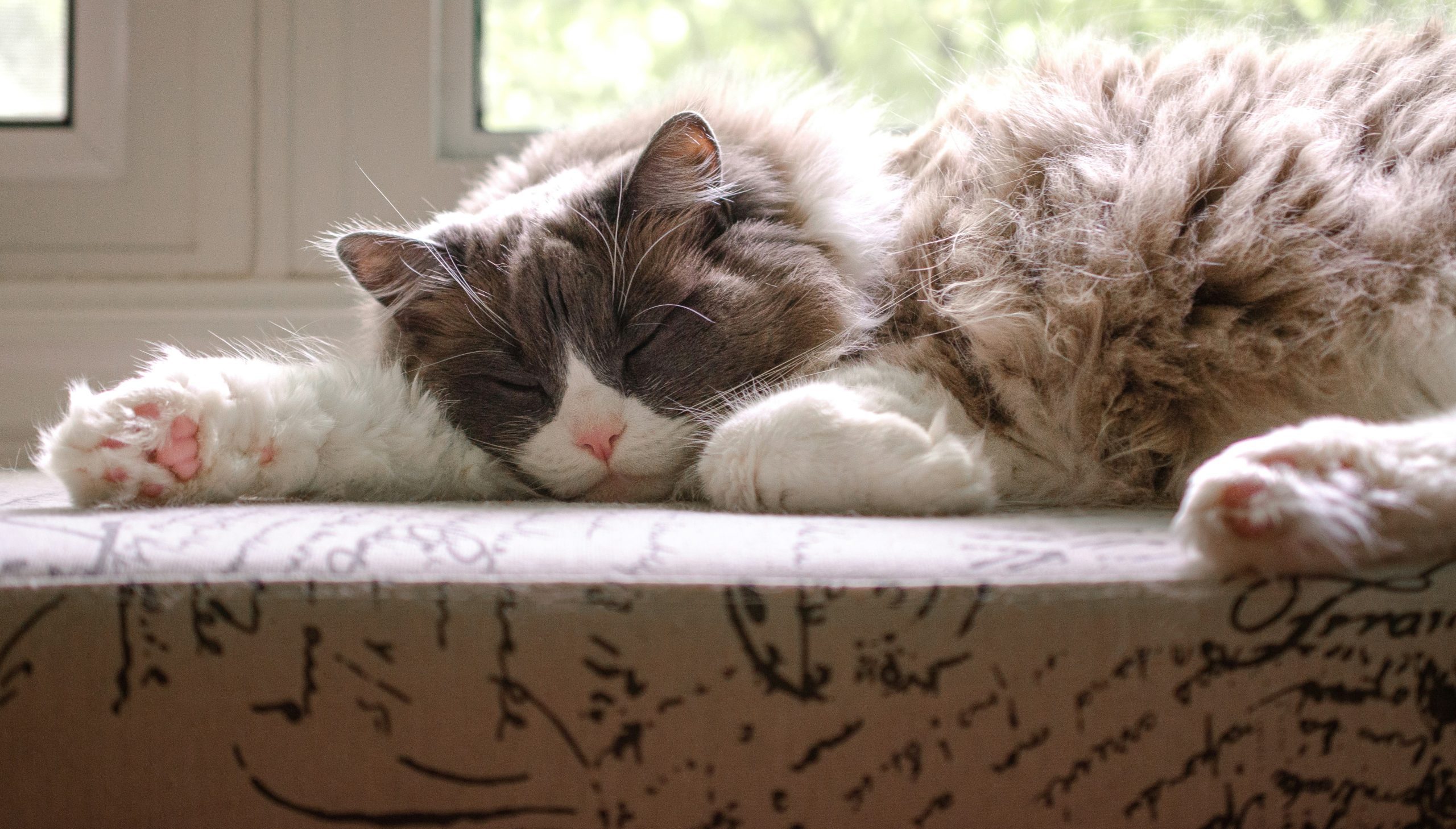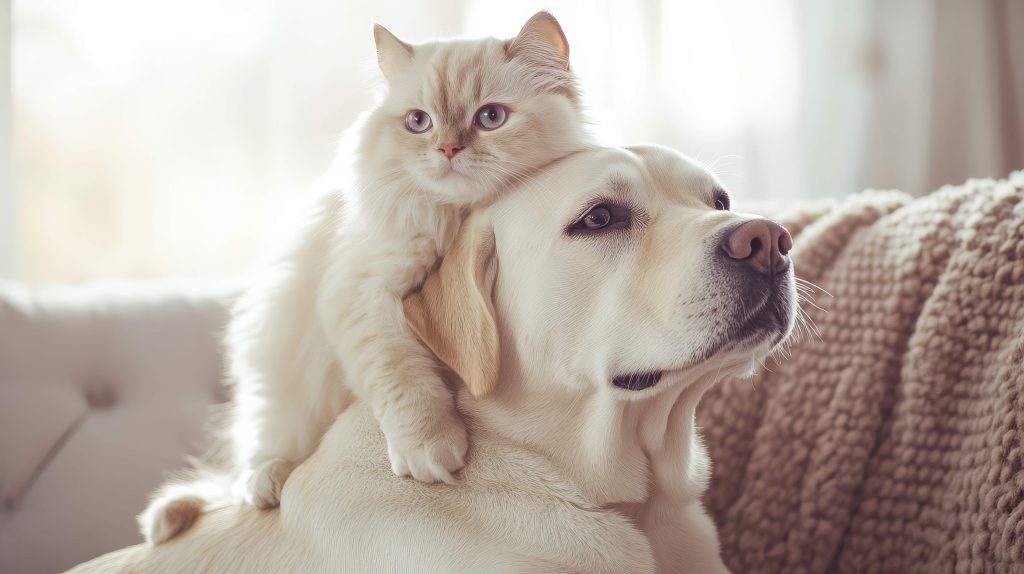Quick fact: Average indoor Ragdoll lifespan: 12–17 years.
Ragdolls are famous for their sweet, calm nature and for often living longer than many other breeds. When you welcome one into your home, you’re not just getting a pet; you’re making a long-term commitment to a gentle, loving family member.
Knowing their potential longevity helps you plan for every stage, from kitten zoomies to senior snuggles. Lifespan isn’t fixed — genetics, indoor living, premium nutrition, and regular vet care can add years.
With the right care, many live into their late teens, and some even reach their early 20s. Understanding this means preparing emotionally, budgeting wisely, and giving your Ragdoll the best shot at a long, healthy life.
Average Lifespan of a Ragdoll Cat
The average lifespan of a Ragdoll cat is 12–17 years when kept indoors, with exceptional cases reaching 18–20+ years under optimal care (source: Cornell Feline Health Center). Outdoor Ragdolls typically live 5–7 years less due to accidents, predators, and disease.
This makes them longer-lived than Maine Coons (10–13 years) and comparable to Persians (12–16 years) (source: breed club data). Estimating “cat years” depends on the method; a common conversion puts a 10-year-old Ragdoll at roughly the equivalent of a 56-year-old human, but this is only a rough guide.
Lifespan is influenced by genetics, diet, and lifestyle, and lower stress levels in a stable home environment can reduce the risk of illness. With regular vet visits, a balanced, species-appropriate diet tailored to life stage, and a safe indoor environment, your Ragdoll could be purring by your side well into their late teens.
Record-Breakers – Oldest Known Ragdoll Cats
Ragdolls have a reputation for long, loving lives, with some owners reporting companions in their mid-20s and occasional anecdotes of 30+ years. Most of these extreme ages remain unverified community stories rather than official records.
Well-documented cases, such as “Rags” reaching 19 years with vet confirmation, show what truly helps: indoor living, premium nutrition, and regular health checks. For perspective, the world’s oldest cat on record, Crème Puff, lived to 38 years (Guinness World Records).
If you dream of a long-lived Ragdoll, start with early health screening, safe housing, and weight management. Love fuels the bond, but good care is what keeps it going for decades.
Key factors that influence lifespan
Ragdolls often live well into their mid-to-late teens, but lifespan can vary widely depending on three main levers: environment & lifestyle, nutrition & weight, and healthcare & preventive care.
The good news? A DNA test can detect some hereditary HCM mutations, but not all — a cardiologist-performed echocardiogram is the gold standard for spotting structural heart disease. Aim for a baseline echo by age 1–3 and repeat as advised. By controlling what you can — safe indoor living, a life-stage appropriate diet, healthy weight, and consistent vet care — you stack the odds toward a long, healthy life.
Key factors to focus on:
- Environment: Keep Ragdolls indoors; add enrichment to prevent stress.
- Nutrition: Feed a high-protein diet; monitor body condition monthly.
- Preventive Care: Schedule routine exams, dental care, and senior screenings.
You can’t change your cat’s genes, but you can build the lifestyle and care plan that helps a Ragdoll reach — and enjoy — their golden years.
You Might Also Like
The Life Stages of a Ragdoll Cat
Here’s exactly how to support your Ragdoll through every stage — when to see the vet, what care to focus on, and what’s normal vs. worrying. Ragdolls mature slowly, often not reaching full size until 3–4 years, so their needs shift later than most breeds.
- Kitten (0–12 mo): Socialization, vaccines, proper kitten diet.
- Young Adult (1–4 yrs): Spay/neuter, weight control, baseline bloodwork.
- Mature (5–10 yrs): Cardiac screening, joint checks.
- Senior (10–15 yrs): Twice-yearly exams, kidney screening/support.
- Geriatric (15+ yrs): Comfort care, mobility support.
Following these stage-specific checklists helps you stay proactive, adding both years and quality to your cat’s life.
Tips to Help Your Ragdoll Cat Live Longer
Small changes today — testing, weight control, enrichment — add measurable healthy years. Focus on three stages:
Early Life Care: Spay/neuter to reduce roaming and cancer risk. Talk with your vet about HCM screening — DNA tests are available for some mutations (vgl.ucdavis.edu), but a cardiologist echo is the definitive screen. Start dental care early.
Ongoing Maintenance: Keep your Ragdoll lean with monthly BCS checks, aim for two 10-minute active play sessions daily, and feed a balanced, high-quality diet suited to their life stage. Schedule yearly vet visits with baseline bloodwork.
Senior Care: From about age 10, move to twice-yearly exams with bloodwork, urinalysis, and blood pressure checks to catch CKD early. Support kidneys with diet changes, add a fountain or extra water bowls, and provide ramps or heated beds for comfort.
Longevity isn’t luck — it’s consistent, stage-appropriate care. My cat’s best nap follows an 8-minute laser session — find what works for yours.
You Might Also Like
Common Health Issues That May Affect Lifespan
Some conditions are especially important for Ragdolls — HCM (breed-linked heart disease) tops the list, followed by PKD (if Persian ancestry), obesity, urinary problems, and arthritis. Many are silent early on, so proactive screening is key.
- HCM: Ask for breeder echo/DNA results; get a baseline echo by age 3.
- PKD: Test if ancestry is unknown.
- Obesity: Keep a monthly BCS log.
- Urinary issues: Add daily wet food and fresh water stations.
- Arthritis: Watch for reduced jumping; add ramps and joint support.
Catch problems early, manage weight, and follow a screening plan — you’ll add both years and comfort to your Ragdoll’s life.
You Might Also Like
How to Tell Your Ragdoll’s Age (If Adopted or Rescued)
If you’ve welcomed a rescue Ragdoll with no birth records, you can still make a reasonable estimate — especially for kittens and young adults — using a step-by-step checklist: Teeth → Eyes → Coat → Muscle tone → Behavior → Vet exam. Start with teeth (most accurate up to ~6 months), then look for eye clarity, coat texture, and muscle condition.
Remember, Ragdolls mature slowly, reaching full size around 3–4 years, so a young-looking cat isn’t always a juvenile.
For older cats, only a vet exam — possibly with dental X-rays or ocular checks — gives the most reliable estimate. Tip: Use clues to narrow the age, but let your vet confirm it.
You Might Also Like
Are Female Ragdoll Cats Longer-Lived Than Males?
Large feline life-table studies suggest females live about 1–2 years longer on average than males, but most of that gap comes from behavior and care, not biology alone. Intact males roam, fight, and face more infections, while neutering and an indoor lifestyle largely erase the difference.
In Ragdolls — a long-lived, laid-back breed that can be affected by HCM — the sex gap often shrinks to near zero when weight is managed and regular screening is done. Whether you pick a boy or a girl, you’ll boost your lifespan most by:
- Spay/neuter on time
- Prevent obesity
- Screen for HCM
Sex matters a little; care matters a lot.
Final Thoughts
Your Ragdoll’s life isn’t just about how long they live—it’s about the quality of each stage. Embrace “life-stage tailored care” by adjusting play, diet, and environment as your cat grows—from kitten zoomies to gentle senior naps.
Focus on three essentials: Learn your cat’s changing needs, Love them with daily connection, and Lengthen their life through proactive vet care and weight management.
Remember, emotional well-being impacts health, so cherish every purr and cuddle. It’s not about counting the years, but making the years count.

Hi, I’m Abir Ahamed—a writer, editor, and proud cat lover with a passion for feline welfare. I use my words to educate, inspire, and advocate for responsible pet care. Based in Bangladesh, I bring a unique perspective to Cats Question, hoping to help cat lovers make informed, compassionate choices.






